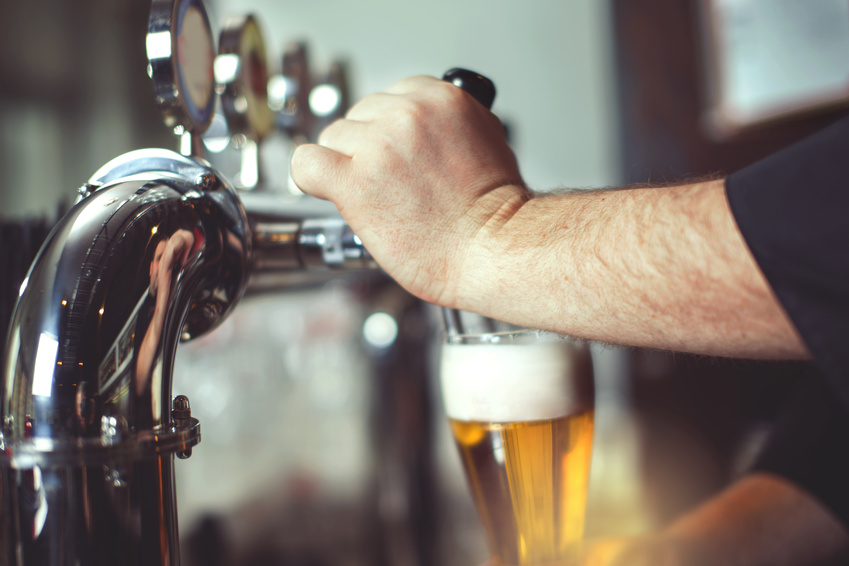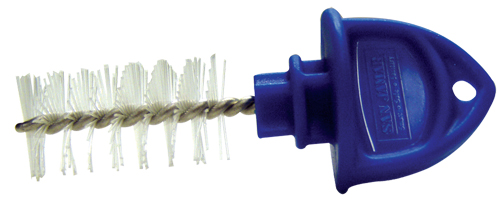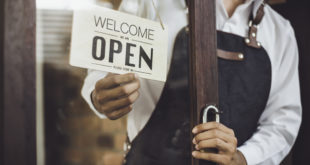
If your restaurant or bar has beer on tap, you already know how much customers appreciate a good pour. Beer on tap tends to taste better, and from a business perspective, buying kegs gives you a better margin than buying it in bottles or cans. For most restaurateurs, beer taps are a win-win.
2 Reasons To Clean You Beer Taps: Taste & Safety
But one thing that’s easy to forget are the food safety issues associated with your tap system. Over time, yeast, mold, and bacteria build up in the tap lines running from the keg to the tap. Fruit flies and other bugs, attracted to the residue beer leaves behind, can also climb up into your beer taps and pollute the line.
All this means beer doesn’t taste as good as it should. It also means you can inadvertently sicken your customers. Those lines need to be cleaned at least once a week, perhaps more often if you serve a lot of it. Fortunately, cleaning beer lines is an easy process that anyone on your staff can accomplish with about 10 minutes of training.
To start, turn off your CO2 supply at the regulator on the tank. This is a very important step because you absolutely must make sure the lines are depressurized! Next, disconnect the CO2 line from the coupler on the keg itself, then disconnect the tap line. The CO2 line usually comes into the side of the coupler at a 90 degree angle and the tap line comes out the top of the coupler and goes up through the bar to your beer taps.
Disconnect the coupler from the keg and soak it in warm water along with a detergent designed for tap cleaning. This is important because regular detergent isn’t as effective at breaking down the yeast and sugar buildup particular to beer.
How To Clean Beer Taps Yourself
To clean the tap line itself, you’ll need to collect a few tools first:
• A 5 gallon bucket (preferably color coded red because you are using sanitizer)
• A keg beer cleaning kit (usually includes a plastic bottle with a hand pump, length of hose, and a coupler)
• A tap wrench
Fill the plastic bottle with tap line detergent and warm water. Mix well. Use the tap wrench to remove the tap faucet and soak this in the same bucket with your keg coupler. Next, connect the coupler on the end of the hose attached to the bottle to the tap where you unscrewed the tap faucet. Go back underneath the bar and make sure the other end of the tap line (where it connects to the keg coupler) is set up to drain into your red 5 gallon bucket.
Pump the solution from the bottle through the tap line and let it fully drain into the bucket. It’s usually good to let it sit for five minutes or so to let that detergent work on any buildup in the line. Rinse out your pump bottle and refill it with cold fresh water. Reconnect it and pump that water through the line.
While you’re waiting for that to drain, take a pipe cleaning brush and clean out the coupler and tap faucet. This is also a good time to check the rubber gaskets on both and replace old or worn ones. Reconnect the system and you’re ready to start serving fresh, delicious beer again!

Finally, get a tap faucet plug for your taps to prevent bugs from crawling into the tap lines when they aren’t in use. This plug doubles as a pipe brush when you clean your tap system.
15 minutes a week should be plenty for you to make one of your best selling items (with a good margin!) always tasting great and safe for your customers.
 Corner Booth Blog | TundraFMP Restaurant Supply, News & Equipment Blog
Corner Booth Blog | TundraFMP Restaurant Supply, News & Equipment Blog




You’ll find that draft beer tends to produce the unwanted side effect of beer consumption, a hangover, and one associated with a pretty bad headache. The cause of this is by lines not being cleaned. Not only does bacteria form, but fermentation as well. So that light beer you think is only 4.2% ABV, is substantially higher. The more you consume the more you absorb. A smart bar owner may think it smart to advertise the regularity and/or cleaning intervals of their tap line cleaning.